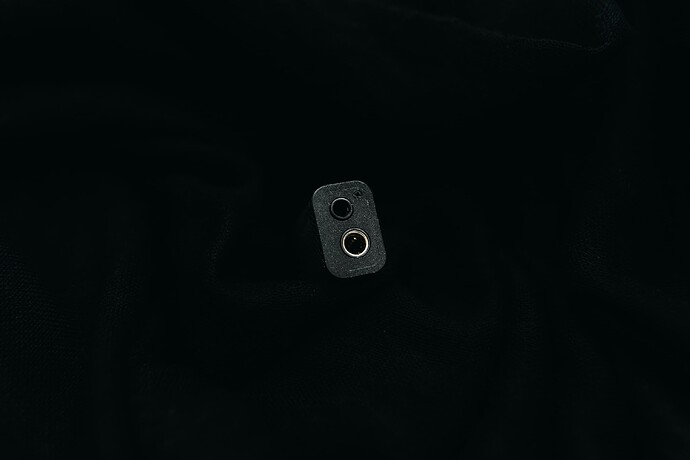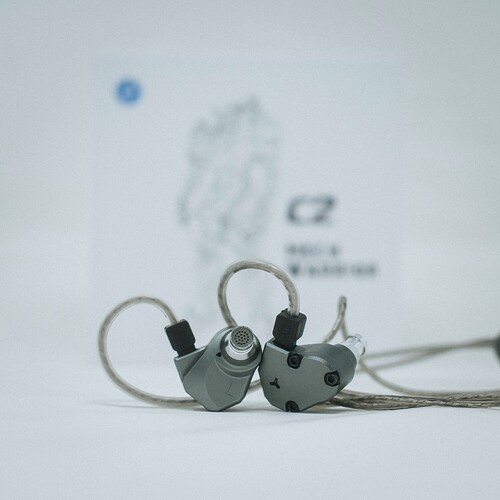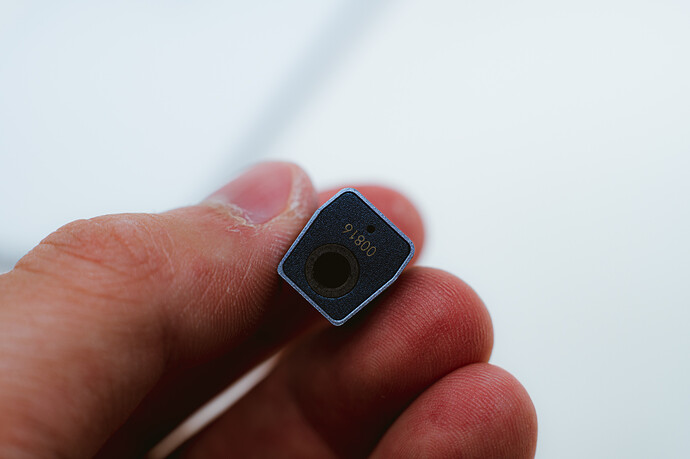Moondrop Stellaris Review
INTRODUCTION AND DISCLAIMER:
The Moondrop Stellaris is an in-ear monitor (IEM) which uses a 14.5mm planar-magnetic driver. The Stellaris retails for $109 at ShenzhenAudio, which sent me a unit in exchange for my impressions.
SOURCES:
I have used the Moondrop Stellaris with the following sources:
- Qudelix 5K
- Hidizs S9
- E1DA 9038D
- Xumee USB-C to 3.5mm Audio Adapter
PACKAGING AND ACCESSORIES:
The Moondrop Stellaris comes in a large square black cardboard box with a white slipcover. The slipcover features an anime waifu on the front cover and an exploded diagram of the Stellaris on the rear cover. The rear cover also provides a frequency response graph for the Stellaris, technical specifications for the Stellaris in English and Chinese, and Moondrop’s corporate address.
The box has three compartments. The first compartment holds the IEMs in a removable foam tray. The second compartment holds the included carry case. The third compartment holds a smaller rectangular box. This box contains the included eartips, a translucent zip-lock bag in which the included 2-pin cable is stored, and several pieces of paper documentation.
The Stellaris includes three pairs of Misodiko foam eartips (S, M, L) and three pairs of what appears to be Moondrop’s take on a thermoplastic elastomer (TPE) eartip (S, M, L). The included case is similar in size and materials to the case included with the Moondrop Variations but uses a more traditional form factor, which is my preference. The flap of this case features a magnetic closure, which works well. In terms of documentation, the Stellaris includes a user manual, a postcard featuring another anime waifu illustration, a quality control pass chit, and a contact card featuring a scannable quick response code.
BUILD QUALITY AND DESIGN:
The Moondrop Stellaris has metal housings with the same glittery blue glossy enamel finish as the Moondrop Starfield. The left faceplate is illustrated with a comet design, and the right faceplate features a sun and a crescent moon. The faceplates are secured via gold screws which feature three tiny circular divets. “STELLARIS” is printed on the back face of each the housing body just below the seam between the body and the faceplate. “L” and “R” indicators are printed above the base of the nozzle in line with the “S” in “STELLARIS.” All the text and designs on the faceplates and shell bodies are printed using gold paint.
There are small circular vents at the bases of the nozzles. The nozzles have substantial lips to secure eartips, which is a welcome change for Moondrop. The nozzles appear to be stuffed with black mesh a millimeter or two down the nozzle bore. The 2-pin connectors are slightly recessed.
The included 2-pin cable uses blue and gold wires wrapped in a transparent plastic sheath. The cable is not braided above or below the Y-split. The Y-split and jack hardware are made from hard dark blue rubber. The Y-split hardware is embossed with Moondrop branding. The cable jack has an L-shaped form factor. The cable features pre-formed earguides and a gold-colored metal chin-adjustment choker. There is strain relief above the jack housing but none at the Y-split. The 2-pin connectors have nearly invisible raised “L” and “R” markings. The cable is mildly microphonic.
COMFORT, FIT, AND ISOLATION:
The Moondrop Stellaris is intended to be worn cable-up. The earpieces have a moderate to deep insertion depth. I found the Stellaris to be average in comfort. However, secureness of fit is below average because the large and heavy housings protrude substantially away from the ears. The housings required periodic readjustment using the included TPE eartips. Isolation is poor. There is no driver flex.
MEASUREMENTS:
My measurements of the Moondrop Stellaris can be found on my expanding squig.link database:
Moondrop Stellaris — Squiglink by Bedrock Reviews
SOUND:
The Moondrop Stellaris does not sound like any other Moondrop IEM I have reviewed, and this is not a positive distinction. Unfortunately, the tuning of the Stellaris reminds me of something TRN would release.
The bass region is most reminiscent of a conventional Moondrop IEM, featuring a moderately elevated sub-bass region that tapers off gently rather than abruptly. Subjectively, the Stellaris does not have as good sub-bass extension as its frequency response measurement would suggest. The bass response is lacking in weight and punchiness. Bass articulation and resolution are both excellent. Bass texture is middle of the road. The bass does not bleed into the lower mids.
The Stellaris has a strained, peaky midrange. Other reviewers have described the Stellaris as “shouty.” I do not feel that shouty is the correct adjective for the Stellaris’ midrange. I would instead use the term Head-Fi-er baskingshark used, “nasal.” Vocals, especially male vocals, seem compressed along the X-axis and have nowhere to go but up. The result is that male vocalists often sound as if they are battling a cold. Harsh male vocals lack body and warmth, while simultaneously sounding overly gritty. Female vocals are a little more realistic but still sound overemphasized and potentially sibilant. Vocals and midrange instrumentation are not well-integrated. Timbral accuracy is acceptable, as is the level of presence.
The Stellaris has an uneven treble response. There is a reasonable amount of lower treble which seems roughly in line with the presence region. However, this is followed by an audible mid-treble peak. This peak overemphasizes the trailing edge of cymbals and hi-hats and can make these kinds of percussion unpleasant to listen to. The Stellaris does have excellent upper treble extension and superb detail retrieval. Other types of technical performance such as soundstage size, imaging, and instrument separation are also excellent for the price point. These qualities are more easily appreciated if the Stellaris’ overall frequency response is massaged into coherency with equalization.
AMPLIFICATION REQUIREMENTS AND SOURCE PAIRING:
The Moondrop Stellaris is quite difficult to drive and requires a moderately powerful source to reach a usable listening volume. I did not notice hiss with any of my devices.
CLOSING WORDS:
The Moondrop Stellaris is a disappointing first entry by Moondrop into the planar-magnetic IEM space. This is an IEM that could have used more time in development and has unfortunately become a victim of the Chi-Fi industry’s breakneck rush to capitalize on a new driver type trend.
Below are my thoughts on why the Stellaris sounds the way that it does:
I do not recommend the Moondrop Stellaris.
The Moondrop Stellaris can be purchased below:
MOONDROP STELLARIS 14.5mm Planar IEMs SUB-Nanometer Diaphragm Dynamic (shenzhenaudio.com)



































